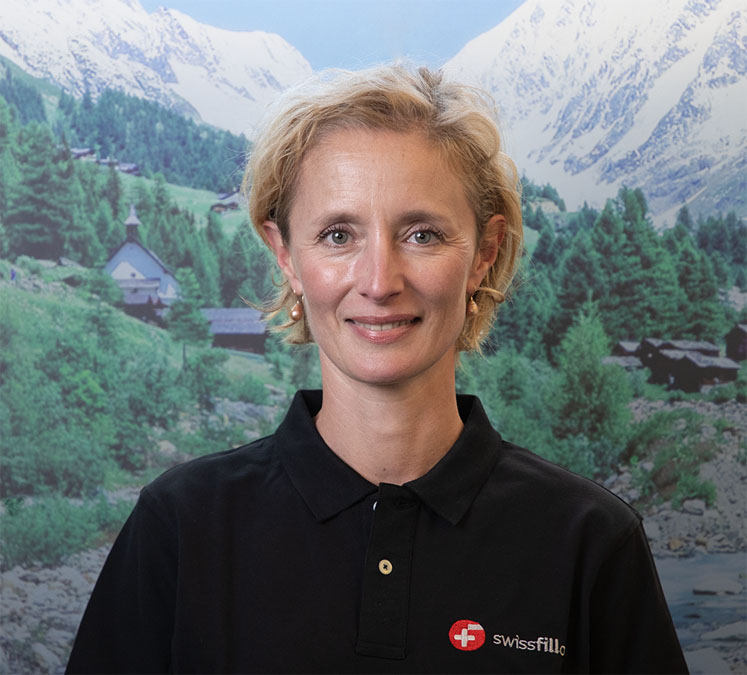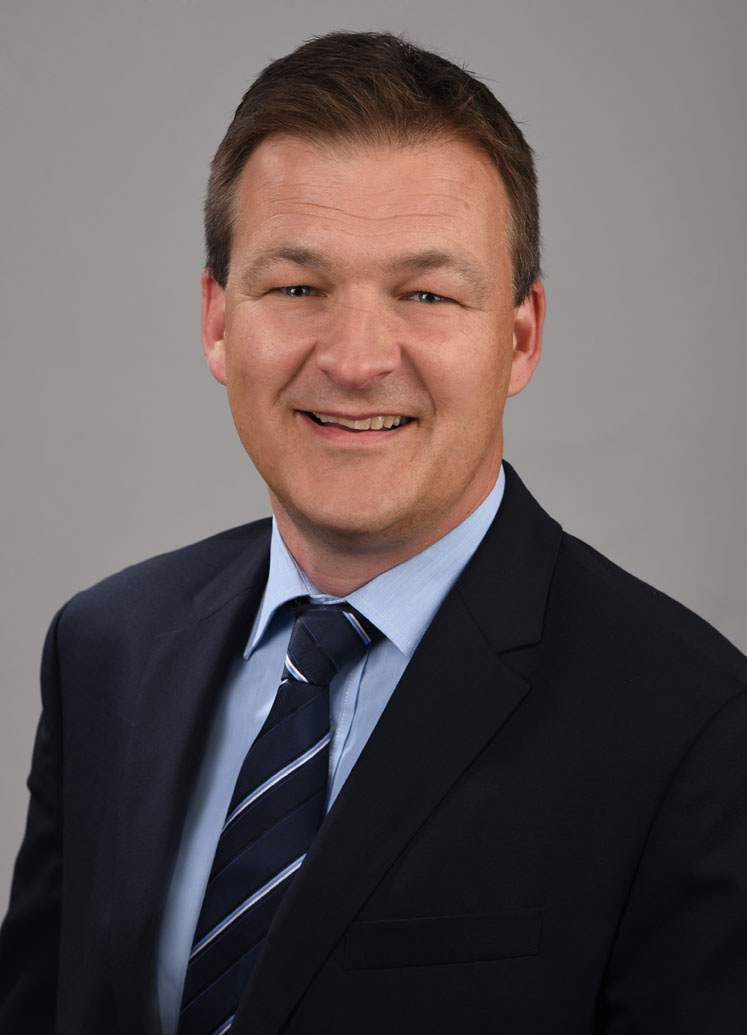KSR: Could you start by providing an overview of the companies and your current strategy?
CD: swissfillon is based in Visp in Switzerland and was founded in 2013 to provide aseptic drug product manufacturing (filling) services for complex, high value injectables that require specialist capabilities and expertise.
We’re currently able to produce a total of 2 million units/year (with 15,000 units/batch) and will soon announce an expansion project to increase our capacity to 20 million units/year (with 100,000 units/batch), which will come online in 2024.
Our key competitive advantage is that we are agile and aligned with new market trends. Historically, Big Pharma has concentrated on blockbusters; but, there is now an exciting marketplace for orphan drugs, rare diseases and personalised medicine.
From 2014–2018, CBER within the US FDA approved 59 novel biologics, compared with 26 in the preceding 5-year period. These drugs are delivered by injection and require a different manufacturing approach to meet specific requirements.

Carole Delauney
Indeed, we believe that there is a trend towards increasingly complex drugs to treat a wide variety of diseases, each with a relatively small number of patients. This means that we need very flexible lines for different product categories, with a variety of primary containers.
Another interesting factor is that the patents of many of today’s blockbuster drugs will expire in the coming years and generics manufacturers will enter the game, producing off-patent drugs in innovative primary containers — including syringes or cartridges for self-applications. These will help to differentiate new drugs from the branded products and provide improved solutions for patients.
HK: SiO2 is a commercial-stage materials science company that addresses major unmet needs for the biopharmaceutical and molecular diagnostics industries. We manufacture primary containers including vials and syringes for biotherapeutics and vaccines.
We also manufacture containers for molecular diagnostics such as blood collection tubes for liquid biopsies and genomic testing. Our customers include top-tier global biopharmaceutical companies as well as smaller biotech and molecular diagnostic companies, as well as genomic laboratories.
SiO2’s proprietary technology platform combines the benefits of glass and plastics, while eliminating the drawbacks. Our headquarters in Auburn (Alabama, US) includes state-of-the-art GMP facilities with a footprint of 28,000 m2 including 14,000 m2 of class 7 cleanroom space.
We manufacture products using fully automated production lines that require minimal human interaction to maintain the highest standards of quality.

Holger Krenz
KSR: What are the key requirements of fill and finish for biopharmaceuticals?
CD: Great process know-how and leading-edge technologies are required to manufacture the latest generation of biopharmaceutical products. In addition, innovative primary containers such as wearable devices are adding further complexity.
It is imperative that the regulatory requirements for the biopharmaceutical product — in combination with the delivery device — are well understood to bring a product to market.
Biopharmaceuticals are extremely high value and a robust manufacturing and filling process is needed to reduce product loss to an absolute minimum. High viscosity formulations for subcutaneous delivery can also present challenges, and specialist piston pumps are sometimes needed to achieve the necessary level of precision.
The drugs are usually produced in small to mid-size quantities (fewer than 200,000 units/year) and the requirements are very specific to each batch. We are able to offer ready-to-use containers (vials, syringes and cartridges) on the same line.
We also offer a choice of containers for different product development phases, which are compatible with autoinjectors, pens and portable devices.
Manufacturing biopharmaceuticals remains an expensive process. Cost-effectiveness could be increased by swissfillon’s 100% automated filling process (from tyvek removal to closing with robotic denesting), including 100% tare and gross weighing, which rejects any out-of-specification containers by the unit instead of the nest/tub.
In addition, our manufacturing line can process bubble-free or bubble optimisation filling with 100% stopper setting control and vacuum or vacuum/insertion tub closing.
The approach is extremely flexible and our dedicated, single use system for the entire liquid path from bulk vessel or bulk bag to filling needle eliminates the possibility of product cross-contamination, overcomes the need to validate cleaning methods and reduces line losses to a minimum (in the order of 200 mL).
KSR: How can SiO2’s platform help to overcome some of the challenges?
HK: By fusing polymer and glass, we are truly able to offer the best of both worlds. SiO2’s proprietary technology platform combines the durability of plastic with the barrier properties of glass, while eliminating the drawbacks of both materials.
Our ability to develop and commercialise this technology is based on our inhouse team of more than 100 world-class engineers and scientists. We have ongoing research collaborations with top US universities and more than 450 worldwide patent entities.
The glass-like coating enhances plastic’s natural resistance to breakage and its excellent dimensional tolerances and design flexibility, and provides a barrier to both environmental gases and solutes from the polymer. SiO2 invested 10 years and more than $500 million to develop and commercialise the technology platform.
We use a plasma-enhanced chemical vapour deposition (PECVD) process to apply a glass-like barrier of approximately 30 nm to the interior of a polymer resin shell for vials, syringes or cartridges.
This consists of an adhesion layer composed of organosilica (which creates a strong unbreakable bond to the plastic exterior), a barrier layer composed of pure silicon dioxide (which is extremely dense and impermeable to gases such as oxygen as well as extractables and leachables) and a protective layer.
This last layer is resistant to hydrolytic attack and dissolution in extremely high pH formulations; it also prevents metal ions from leaching into the drug formulation.
We can apply this barrier coating to a wide range of container sizes, creating a common contact surface for the drug formulation. During the drug development cycle, the general approach is to start with a specific container for early stage trials and then move to the final container at late stage development.
This allows drug compatibility testing with the primary container and provides additional shelf-life, which is particularly helpful for sensitive biological drugs.
Having an inert drug contact surface, irrespective of the container geometry, also offers strategic benefits for lifecycle management programmes of commercial products: registration stability studies can be reused for different containers, which can simplify and accelerate the submission process.
Great process know-how and leading-edge technologies are required to manufacture the latest generation of biopharmaceutical products
In addition, by avoiding the use of silicone oil, we are able to minimise subvisible particles and reduce the risk of immune side-effects and protein aggregation.
The containers produced using this technology are shatterproof with thermal shock resistance to –196 °C and also support steam sterilisation at +121 °C.
Our new packaging platform technology accelerates time-to-market by eliminating failure modes between the container and the drug formulation during development and also minimises the need to resubmit FDA stability data.
KSR: What are the benefits to your clients of swissfillon and SiO2’s partnership?
CD: swissfillon offers a manufacturing solution tailored to market requirements, whereas SiO2 produces safe and secure primary containers with optimised performance.
Both companies provide a solution for high-value drugs such as biologics and complex products such as autoinjectors, pens, portable devices and specialist ophthalmic solutions. Our partnership was developed to capitalise on the synergies of this common focus.
SiO2’s primary packaging attributes for fill and finish operations are closely aligned with swissfillon’s technology.
From the point of view of our customers, SiO2's primary containers can provide high flexibility in terms of container design and also offer primary container traceability using unique ID codes, which will soon become a must.
There is minimal variation from unit to unit and tight container tolerances, which reduces filling errors as we handle container by container on our filling line.
SiO2 containers support all standard stoppering methods, such as vent tube or vacuum loading, whereas the optimised nest/tray design decreases the number of potential rejects during visual inspection controls and ensures smooth operations (owing to tight tolerances on weight and dimension).
HK: We should stress that it is still vital that potential customers involve the primary container and their fill and finish partners as early as possible.
The rise of biopharmaceuticals within the last 20 years introduced new demands and challenges for primary packaging containers. SiO2’s containers are well suited to meet the requirements of new, complex biopharmaceuticals.
If clients approach us at an early stage, we can discuss the advantages and limitations of possible options; as such, the customer, CDMO and the primary packaging supplier can work together to develop an optimal solution. Any delays could result in serious problems further down the line.
